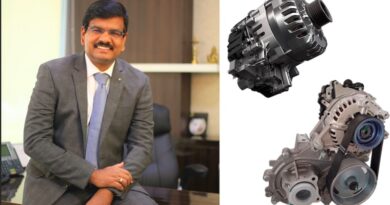Additive Manufacturing for Product Development and Rapid Prototyping of Electric Powertrain
Adoption of Additive Manufacturing for fabrication of electric motor components
In this interaction with Amit Nanavati, Founder of Singapore-based Bralco Advanced Materials, we tried to understand the relevance of Additive Manufacturing for the development of electric powertrain components.
What is Additive Manufacturing (AM)?
Additive Manufacturing is a part fabrication process wherein the part is built layer by layer from powder feedstock using Laser power and is labeled as L-PBF process. This is the most commonly used process. There are a few different variations of the L-PBF process as well as non laser additive manufacturing processes.
The reason it is called “Additive” Manufacturing is that the part is built in an “additive” way as opposed to the “subtractive” way where material is removed or cut in the traditional fabrication processes.
Where can AM apply with respect to EV powertrain development?
AM can be applied in the fabrication of stator, rotor, permanent magnets and copper windings.
It can also be applied in the manufacture of the shaft, housing and support plates if the cost-benefit analysis justifies it.
Also Read: Basics of EV Powertrain
What would be the benefits of AM for motor manufacturing over conventional methods?
The motor is the most critical part of the e-powertrain and its efficiency determines the power of the drivetrain. Motor efficiency is a function of the electromagnetic properties of the material from which stators, rotors and the permanent magnets are fabricated, the design (torque density), weight & size of the core and the internal microstructure of the soft and the hard magnets.
Using AM technology to fabricate the motor core can reap several benefits starting from very speedy execution from CAD drawing to a finished component in a matter of hours, dimensional accuracy, tailored and targeted electromagnetic properties, good mechanical strength, zero investment needed in dies and molds, almost zero scrap, possibility to design conformal cooling channels to dissipate heat more efficiently and also the possibility of lightweighting or miniaturizing the motor.

The existing technology of fabricating stators and rotors from laminated steel is the most commonly used method as the material and its fabrication processes are very well established and optimised for its cost function. However, this technology route has certain limitations such as predominant use of silicon iron alloy which is difficult to fabricate if the sheet thickness is reduced below 0.10 mm and the Si content is increased beyond 3.5%. The trend is to reduce the sheet thickness to obtain superior core loss but this method allows only 2D magnetic flux flow and planar geometries of the cores. The newer applications in motors for electric vehicles, drones, robots and micro medical devices need cores having complex geometry, 3D magnetic flux flow, light weight and micro size. All these features can be delivered by using the Additive Manufacturing technology.
In addition, in AM technology there is no need for costly dies and molds, hence prototyping single piece is not a challenge thereby reducing cost and time to market. Moreover, the fabrication limitations of the stamping process do not apply because the parts are made layer by layer in an additive flow in a matter of hours instead of weeks. This enables the fabricator to use a much wider variety of materials from silicon iron containing up to 7% silicon to cobalt iron having 50% cobalt and a variety of nickel iron alloys ranging from 25% Ni to 85%. Conformal cooling channels can be ingrained into the cores for superior thermal dissipation. Microstructure engineering and thermal post processing can ensure high mechanical strength. All these features of AM technology empower the motor designer to match the material to the end use application performance parameters to achieve the maximum efficiency of the motor. Topology Optimisation and Multiphysics software can be integrated at the motor design stage to further enhance efficiency. The obtainable results are predictable and targeted. This removes the guesswork and trial and error cost from new designs that can best achieve the targeted performance.
What is the current state of usage of AM for electric powertrain manufacturing globally?
AM Technology is the most state of the art technology platform within Industry 4.0 and its scope and strengths are just being recognized. The adoption rate of this technology is at a nascent stage but I am sure it will become a widely used technology once the benefits become well known.
About Bralco Advanced Materials
Bralco Advanced Materials is a Singapore based deep tech R&D, Product Development and Rapid Prototyping Start Up. Area of expertise – Developing stators, rotors from soft magnetic materials and permanent magnets with lower volume fraction of Nd & B using Additive Manufacturing technology to reduce the cost and time to market for motors and powertrain.
Subscribe today for free and stay on top of latest developments in EV domain.






Hi I am Mazher ali from shimoga dist karnataka interested this I will doing this job immediately joining